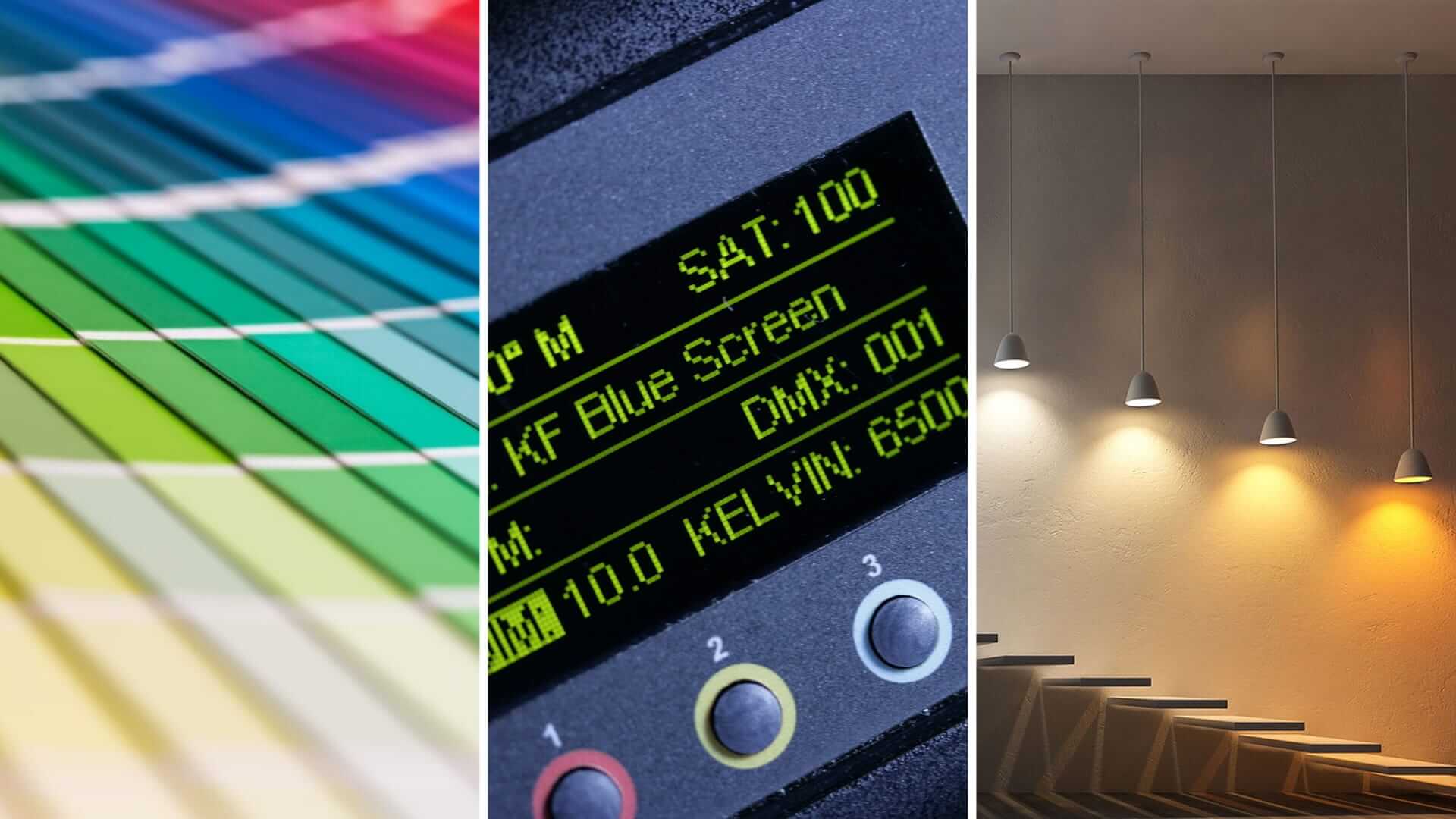What is a color rendering index? This bit of technical jargon might seem daunting to unravel, but in this post, we’ll be breaking down this somewhat scientific term into the simplest language possible and providing a clear definition. We will also take a look at how a color rendering index is used and why it matters in photography and filmmaking.
Color rendering index meaning
First, let’s define color rendering index
If you encounter any other filmmaking jargon in the wild, our ultimate guide to cinematography terms and our glossary of filmmaking terminology are great resources for looking up definitions.
Trying to define color rendering index is highly technical and scientific, so don't worry if you have a hard time wrapping your head it at first. Now, let’s define color rendering index.
COLOR RENDERING INDEX MEANING
What is color rendering index?
A color rendering index, also known as CRI, is a measurement of how faithfully a light source reveals the colors of whatever it illuminates. Light is what enables the human eye to perceive color, but differences in various light sources can skew our perception of an item’s objective color. CRI lighting is primarily determined by the spectrum of a light source.
Color rendering index vs color temperature:
Color temperature also alters our perception of color, but this is not calculated by CRI. Instead, temperature is accounted for as correlated color temperature, also known as CCT. These two metrics are related and often confused with one another but are separate.
CIE Ra is the specific CRI lighting used as the international standard for the sale of lighting products. The higher the number a light is graded on a CRI lighting scale, the more accurately it reflects the subject’s true color. The maximum CRI lighting value is 100. A light source that is graded a 100 on the CIE Ra is considered to provide a perfect representation of an item’s objective color and is considered equivalent to standardized daylight or a “black body,” which means it absorbs all colors of light and all occurrences of electromagnetic radiation.
Most fluorescent lights fall in the range of 50-98 while most LED lights land between 80-98. Incandescent light sources are capable of achieving 100 on the CIE Ra index. Though they are typically far less efficient than other types of lights, producing more heat and requiring far more energy to produce the same amount of illumination as other types of electrical lighting.
Color rendering index CRI
- The international standard is known as the CIE Ra
- Represents a light source's ability to reveal true color
- Measured on a scale of 1-100 with 100 being the most natural
How to measure color rendering index
How the color rendering index is used
Color rendering indexes, and the CIE Ra in particular, are widely used around the world in the manufacture and sale of lightbulbs, lamps, and other electrically powered light sources. CRI is used throughout the entire lighting industry as a standardized metric.
The following video explores the CRI ratings of lights commonly used in different fields such as retail, industrial, landscaping, and even infrastructure.
CRI is used in all types of industries • What is CRI?
A color rendering index may be used in any industry that values lighting. Light bulb manufacturers, home decorators, and art gallery owners all benefit from referencing a CRI in their work. The color rendering index can also be an important tool in the fields of photography and filmmaking.
What is CRI
Why the CRI matters in filmmaking
Lighting is incredibly important in filmmaking. A CRI can help a cinematographer make informed decisions when it comes time to purchase lights and when it’s time to pick which type of light to use for a particular shot depending on the needs of a scene.
While it is entirely possible to work as a cinematographer without ever consulting a CRI, some of the best working cinematographers know that a CRI can be a useful metric for quickly determining the quality of a light.
CRI for film lighting • How to measure color rendering index
Within the film and television industries, the TLCI is often used to measure the accuracy of color in place of the standard CRI used in other industries. The TLCI, which stands for television lighting consistency index, is specifically designed to measure how accurately lights depict color on camera.
As opposed to the CIE Ra which measures how accurately lights depict colors to the human eye. Here's an excellent explainer from Aputure on the subject.
What is color rendering index • CRI vs TLCI
If you struggle to make sense of and keep track of all of these acronyms and bits of technical information, you might be safe leaving it by the wayside. There is a lot more that goes into great film lighting than CRI, and only a couple of crew positions will find any use for a CRI.
UP NEXT
Color Grading vs. Color Correction?
You should now have a pretty good grasp of what the color rendering index is and how it’s used. But, there’s more to coloring film than just the CRI. Color can continue to be manipulated after a film has been shot in post-production. Take a deep dive into the color grading and color correction processes, up next.
Up Next: Grading vs. Correction →
Showcase your vision with elegant shot lists and storyboards.
Create robust and customizable shot lists. Upload images to make storyboards and slideshows.
